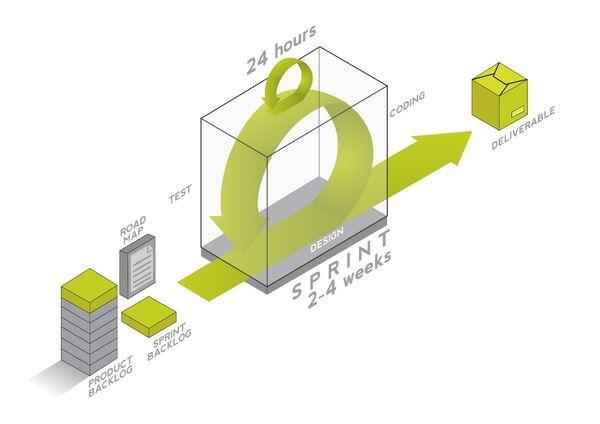July 20, 2015
Scrum: An Agile Introduction
One of the most common agile models in use today is Scrum. Scrum is popular frameworks for agile implementation. Many people think agile and scrum are same, but they don’t. Many frameworks can be used to implement agile such as kanban, scrum etc.
Description of the work flow in Scrum:
- Product Backlog. This is the list of requirements to be implemented at some point. The requirements contained in the backlog are based on the product roadmap. The road map can cover 12 months. This is comparable with a software maintenance management plan or a project plan document.
- Sprint Planning. The product owner defines the goals for the sprint. The product owner chooses the requirements from the backlog to meet the sprint’s target. The team estimates the amount of resources needed to implement the requirements, and then breaks down the requirements into smaller development tasks.
- Sprint Backlog. A list of tasks to be performed during the sprint. It is owned by the team.
- Daily Scrum Meeting. Held the same time each day. The team members tell what they have done, what they plan to do and impediments. This is the time to update the burn-down chart if that’s not being done continuously (as it is when digital scrum boards are used). Update sprint backlog to reflect the current state of the sprint.
- Sprint Evaluation. This gives a clear idea to the team what they have done during the sprint. When the sprint is complete, the team holds a retrospective, in which the team tries to learn from what went well or badly in the previous sprint.
- Delivery of Increment. An increment is the smallest version of the system that is possible to deploy.
It is common to use both Scrum in combination with other elements from other agile models, such as a Kanban board or principles from Lean development.
Working with Scrum Requirements from Vision level to Sprint level
Scrum methodology guides you through many levels of analysis, from an overall vision down to individual sprints:
The Vision shows requirements of high level of detail describing in which direction the product is moving in the long term. A good vision helps the team understand the big picture. It is owned by the product owner.
Product Roadmap is the same vision rendered in more detail. It shows roughly what’s needed (requirements for functionality) to achieve the vision. It helps the team to understand what is coming in future releases, and it’s also the basis of the product backlog. The roadmap is also owned by the product owner.
Product Backlog is the next level of analysis under the roadmap. It shows roughly what’s needed (requirements for functionality) to meet the objectives of the roadmap, and helps the team to understand better the kind of tasks they’ll be working on. This includes requirements for future releases and sprints. Each requirement contains a description of the requirement, priority, value and benefit as well as rough estimates. It’s owned by the product owner too.
Sprint Backlog contains individual requirements (sufficiently detailed so that the team understands them). The requirements are broken down into detailed development tasks designed to meet the requirements of the sprint. The requirements’ priority level determines which ones the team shall implement first. It should be reasonably easy for the team to see the value and benefit for each requirement. The Sprint Backlog covers one increment, i.e. functionality to deliver for the sprint. The sprint has a goal that is used by the team to focus on what should be done and decide what is not important to do right now. It is the team that owns the sprint backlog.
Share article
